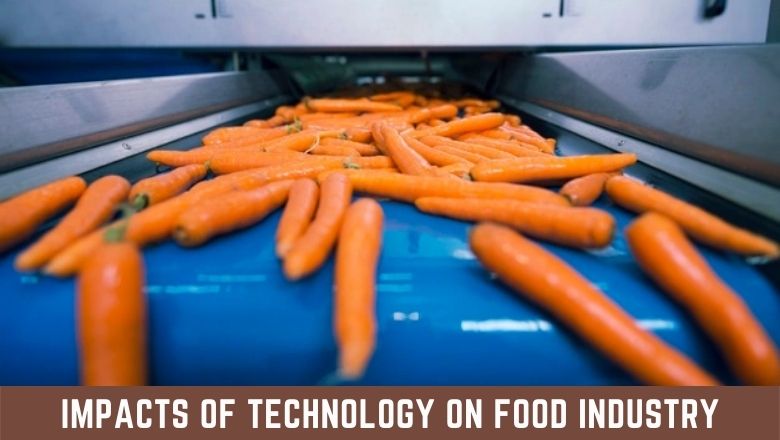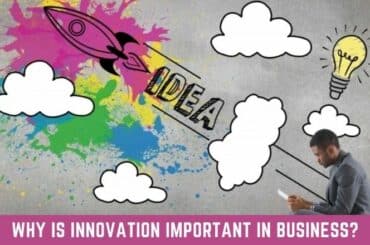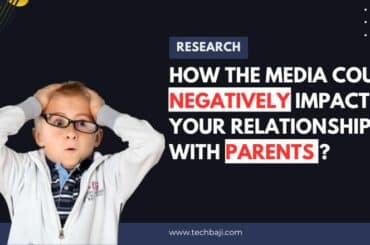The impacts of technology on the food industry have gone extensive. The food industry has developed tremendously in the 21st century and it has now become more complex to maintain the long chain of supply and satisfy the human love for food.
Table of Contents
It requires innovation to maintain the processes in the food industry because food is one of the most important and the most loved obligations of human life.
It is important in maintaining a healthy life and normal growth. Due to the love of humans towards food, this sector is going to exceed $3.1 trillion by 2024.
In this article, I am going to share my view on some interesting positive effects of technology on the food industry.
Positive Impact of Technology On Food Industry:
Technology is providing convenience and aid in every aspect of life. It is providing human beings with convenience related to food.
Technology is playing a role in all aspects including food production, processing, packaging, safety, etc.
All those technological processes that help us in providing food to our belly can be incorporated into the positive impacts.
Let’s discuss those interesting benefits of technology in bringing food.
Increased food production:
Technology is serving a crucial role in the production of food. The population of the world is 7.5 billion and it is going to increase in the future. That is a big challenge to feed such a large population.
To fight hunger technology is helping us in producing more food. Agriculture technology is incorporating digital and advanced technology in producing food and raw materials for industrial and eating in restaurants.
Below are some of the Agriculture based technology approaches in food production:
GMO’s:
- GMO stands for a genetically modified organism. These organisms are developed by inserting the desired genes in plants.
- GMO’s played a significant role in high production and disease resistance to avoid losses in yield.
- Moreover, they are made to grow in those areas where the environment is not favorable for production to support the demand and ensure the supply of food in every region of the world.
- GMOs include many major crops such as wheat, corn, rice, etc.
Drones:
- Drones are having applications everywhere and now in the food production sector.
- Precision agriculture is based on the drone and satellite imagery from above through drone cameras.
- It greatly helps in monitoring crop growth to effectively deal with the problem areas to avoid losses and ensure maximum production of food.
Technology in the meat industry:
- Artificial intelligence is effective in high poultry production. The global demand for meat and eggs is very high because it is used as raw material for other food items industries.
- AI is used to detect birds having a health issue through the sound of the bird.
- Moreover, to ensure the rapid pace of production, AI robots are used to perform different works on poultry farms and butchery.
- The robots and machines are doing difficult jobs of butchery and complex cutting of meat.
Improved food Storage:
After the production, the priority is the storage of food, and here comes one of the major positive Impacts of Technology on the Food Industry is that technology has enabled the food industry to safely store food for longer periods.
Companies have developed large storage facilities for food products. The storage area has the prescribed cooling or warm environment with the best nitrogen and oxygen levels.
Storage facilities are installed on transport vehicles to safely store and transfer food commodities with the required levels of chemicals, moisture, and air.
An oxygen absorber is used in storage facilities to prevent rotting and insect attacks on fruits, vegetables as well as meat.
The facility of the 3D food printer:
3D food printer is another charming wonder of technology in the food industry. Like an inkjet printer, the food printer can print mouth-watering food items like candies and a pizza of different layers and toppings.
Artificial intelligence is used that design the structure and layers of food according to the design fed to the software.
The food printer is being designed for the kitchens in homes and restaurants that will make tasty food at a much faster pace than humans with a delicate past-up.
It can make candies in seconds and delightful pizza in just a few minutes. It is also having great application in manufacturing industries of foods such as candies, snacks, and cakes.
Food packaging:
One of the greatest impacts of technology on food is food packaging. It is the most important and basic component of the food industry. The technology of food packaging has revolutionized the food industry.
Packaging protects food from the physical contamination of germs and ensures safe delivery to consumers.
The packaging is made according to the food items and their characteristics. Every food item has its type of packaging.
Dairy products are delivered in tetra packaging keeping in mind the delivery and shelf life while for beverages tins and glasses are used with a specific amount of O, CO2, and nitrogen to protect, increase shelf life and ensure quality.
Accountability of food:
Internet technology has enabled the customer to access the latest and scientific knowledge regarding foods.
Due to the connection of customers to the latest information, the manufacturer can not mislead them about the food products.
The customer is well aware of the ingredients and the processes of foods how they are made.
The technology enables the customer to question the food manufacturer or restaurants about the ingredients and their levels in the food.
The customer avoids food threatening to their health. The food manufacturer has to make quality and healthy food items to satisfy customers and compete in the market.
Promotes a culture of food safety:
One of the major positive Impacts of Technology on the Food Industry is that technology-enabled scientists deeply research and discover key facts about foods. Special departments have been formed that perform researches and awareness on the foods.
Natural toxins are present in fruits and vegetables that can harm health if consumed excessively.
Moreover, the harmful effects of certain food items’ interactions in the stomach processes are also discovered by researchers. The technology and scientific processes identify natural toxins present in food items.
Food safety culture aware of the consumers to avoid excess use of that food item and recommend a daily or weekly amount for health safety.
Micro-nutrient food fortification:
In the 21st century technology and researches gave awareness to the people about the importance of micro-nutrients in food.
Studies have found that in different regions of the world the communities lack a sufficient amount of micro-nutrients that lead to certain diseases and weaknesses like goiter due to deficiency of iodine, scurvy from vitamin C.
Food fortification enriches foods in those needed micro-nutrients whether it is found naturally or not in food.
Commercial fortification of Iodized salts, wheat, and cornflour is available for overcoming nutrient deficiency.
Conclusion:
The technology of food has the potential to fulfill the demands of the exploding population. It can greatly improve the way how we produce and consume food. The impact of technology on the fast-food industry is soaring.
Restaurants and food manufacturers have adapted to modern technology after knowing its immense benefits.
The 3D food printer is going to take place in the kitchen at every home and would be a revolution in the kitchen appliances. It can prepare food of taste in a few minutes without any inconvenience.
The rise of such interesting food technology can not only full fill the demands but ensure long shelf life, safety, and taste.
Do share your feedback. Use the comment section if you have any queries, I will respond to you as soon as possible.
Do share it with your friends. Keep reading and learning with Tech Baji.






2 Comments
Hello, may I know who’s the writer of this article? Thank you! I’ll be needing it for my research paper.
Hello Rej, you can check the bio section of the article.Thanks